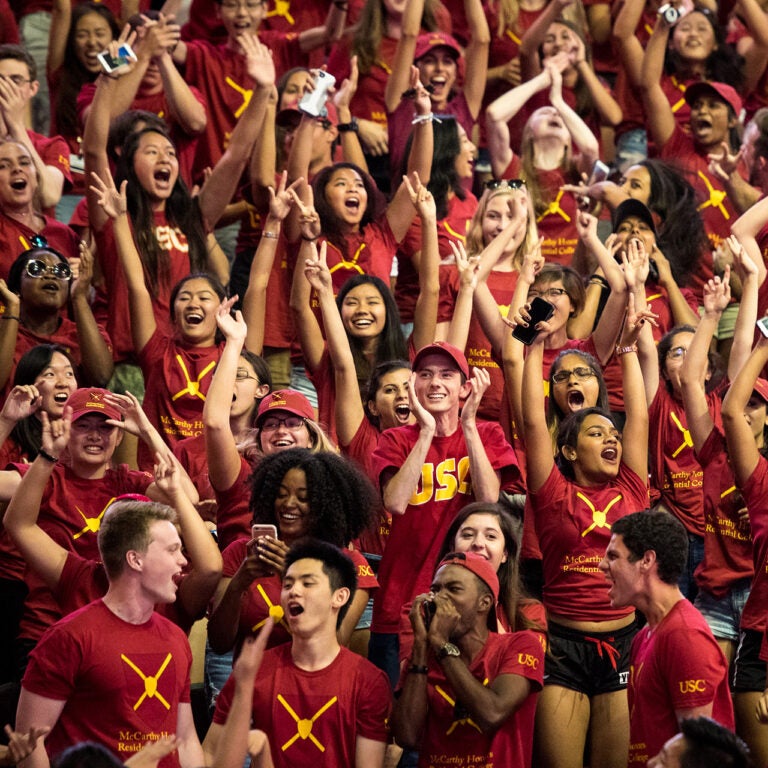More Americans will be able to view the 2024 total solar eclipse than the one in 2017, when visitors at NASA’s Jet Propulsion Laboratory stopped to watch the celestial event on Aug. 21, 2017. (Photo/NASA)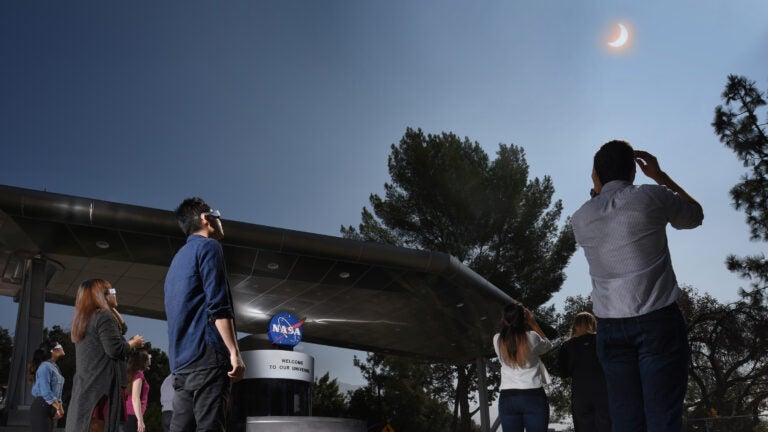
Science/Technology
The best place to see the total solar eclipse in 2024
Here’s where the skies will be clearest — and the surroundings most beautiful.
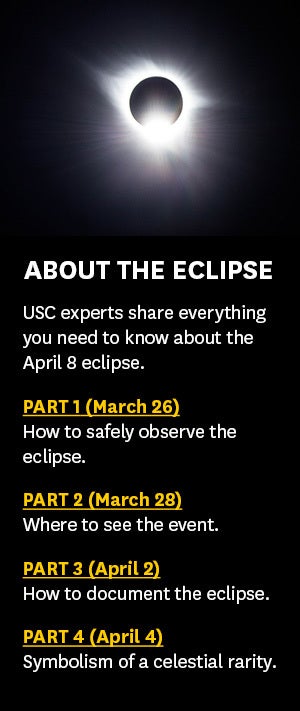 Total solar eclipses — which occur when the moon passes between the Earth and the sun, temporarily blocking the sun’s brilliance — are rare phenomena. On April 8, 2024, a total solar eclipse will be visible from the contiguous United States for the first time since 2017, and the next one won’t be seen from U.S. soil until 2044.
Total solar eclipses — which occur when the moon passes between the Earth and the sun, temporarily blocking the sun’s brilliance — are rare phenomena. On April 8, 2024, a total solar eclipse will be visible from the contiguous United States for the first time since 2017, and the next one won’t be seen from U.S. soil until 2044.
In USC News’ four-part series on the eclipse, USC experts weigh in on all aspects of this extraordinary celestial event: how to safely view the eclipse, the best place to see it, how to photograph it, and its symbolism.
Part 2: Where to watch the event
More Americans will have a front-row seat to the 2024 total solar eclipse than they did during the one in 2017. As it moves along its path from southwest Mexico to northeast Canada, the eclipse will cross 13 U.S. states, from Texas to Maine, passing over more cities and densely populated areas than the 2017 eclipse.
An estimated 31.6 million people will be in the path of totality — where the moon totally blocks the sun — up from 12 million in 2017. Millions more are expected to travel to see the totality unfold.
Outside of the path of totality, a partial solar eclipse will be visible in all 48 contiguous states.
But no matter the location, the weather will be a mitigating factor.
“The only thing that’s going to matter is whether you have cloudy skies or not — because if you have cloudy skies, you’re not going to see the eclipse,” said Vahé Peroomian, professor (teaching) of physics and astronomy at the USC Dornsife College of Letters, Arts and Sciences.
The best city for clear skies
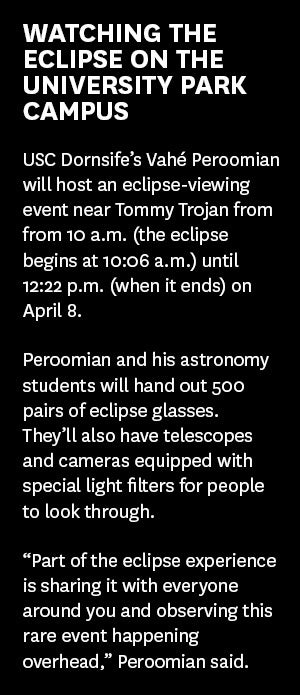 April 8 is historically an overcast day along much of the eclipse’s path. “Every city in the U.S. along the path of totality has had cloudy skies 60% of the time [on April 8] in the last 20 years,” said Peroomian, an avid astro-tourist.
April 8 is historically an overcast day along much of the eclipse’s path. “Every city in the U.S. along the path of totality has had cloudy skies 60% of the time [on April 8] in the last 20 years,” said Peroomian, an avid astro-tourist.
He recommended paying close attention to the forecast before making travel plans. “You might travel a long way only to see cloudy skies,” he cautioned.
Peroomian singled out Mazatlán, Mexico, as the best city for eclipse tourists. “It has only a 28% chance of being cloudy [on April 8],” he said.
The best natural setting
If the weather permits, natural settings such as national parks can create evocative backdrops for the eclipse. Niagara Falls in New York, Hot Springs National Park in Arkansas and Cuyahoga Valley National Park in Ohio are just a few of the most scenic spots along the path of totality.
Last August, Peroomian traveled to Bryce Canyon National Park in Utah with his son to see the annular solar eclipse, when the moon partially blocked the sun. He described the natural surroundings as awe-inspiring. As the sky got progressively darker, the air temperature dropped, and the wind quieted.
“Birds stopped singing,” Peroomian said. “A hush fell over the landscape.”
The best place for scientific research
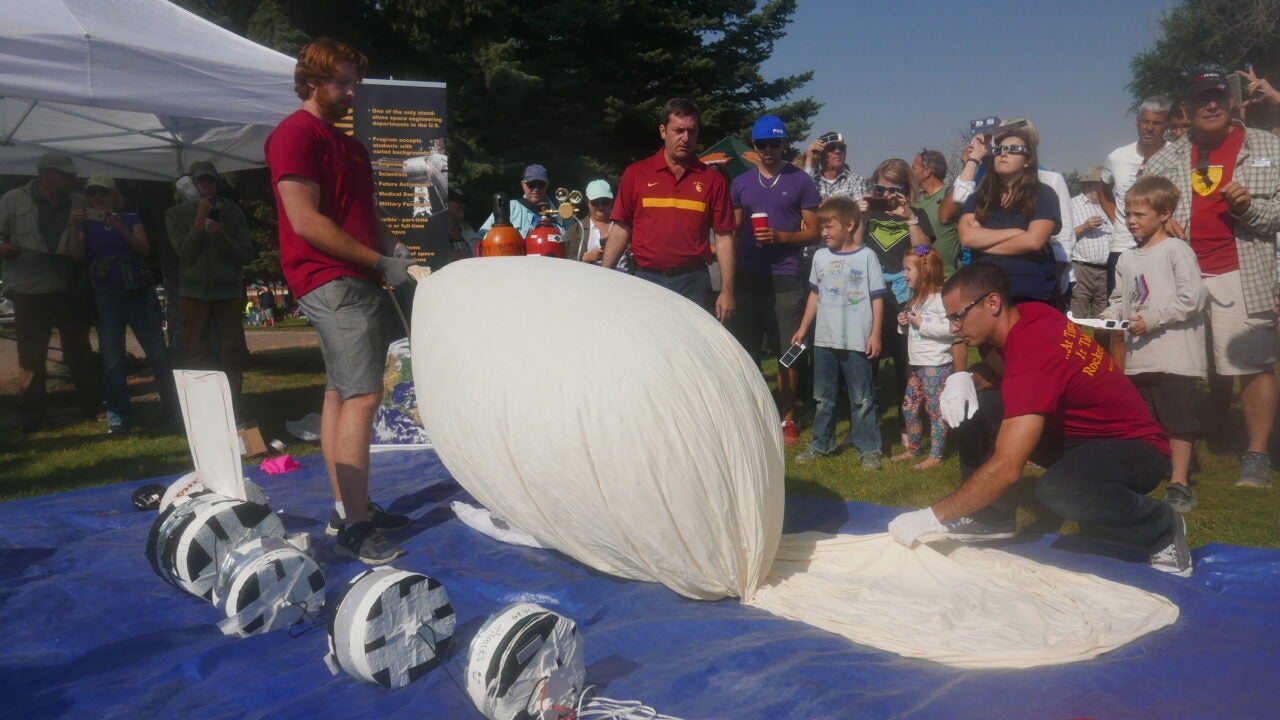
At the USC Viterbi School of Engineering, a group of 16 students has been working since January to figure out how to photograph the eclipse from a helium balloon that will rise approximately 100,000 feet in the air — to the edge of space.
Since cloudy skies could thwart the mission, the group —advised by Michael Kezirian, adjunct professor of astronautics practice — spent considerable time choosing the most promising location for the balloon launch.
The group favored Texas for its wide-open terrain. First-year aerospace engineering student Nicholas Lototsky gathered weather data from cities around Texas from the past 40 years and ran simulations of the balloon’s trajectory from launch to peak altitude.
He settled upon Del Rio, Texas — a small city approximately seven miles from the U.S.-Mexico border — as the optimal launch spot.
Armen Arakelyan, a junior astronautical engineering major co-leading the project with astronautical engineering PhD student Howard Hall, said he’s looking forward to traveling to Del Rio with the group.
“It’s one thing to just see the eclipse, which is really cool,” said Arakelyan. “But whenever you have some objective, some mission behind it, it just adds another level to it.”
